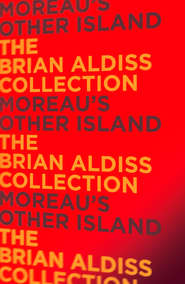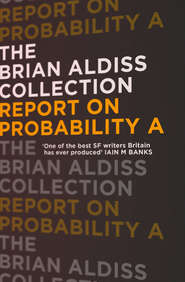По всем вопросам обращайтесь на: info@litportal.ru
(©) 2003-2024.
✖
When the Feast is Finished
Настройки чтения
Размер шрифта
Высота строк
Поля
Chapter V (#litres_trial_promo)
Chapter VI (#litres_trial_promo)
Chapter VII (#litres_trial_promo)
Chapter VIII (#litres_trial_promo)
Chapter IX (#litres_trial_promo)
Chapter X (#litres_trial_promo)
Chapter XI (#litres_trial_promo)
Postscript (#litres_trial_promo)
About the Author (#litres_trial_promo)
Also by Brian Aldiss (#litres_trial_promo)
About the Publisher (#litres_trial_promo)
Introduction (#u4e1f5e53-d5b6-5e79-9370-bbb15a31eaea)
We must all be grateful to Brian Aldiss for his courage and determination in writing this fine book about the terminal illness of his wife, Margaret, who claimed she was not ‘important’ enough for such attention. In doing so, he has given us a portrait of a remarkable woman and a remarkable marriage; he has also produced the best day-to-day, personal account of a terminal illness I have ever read.
Anyone who has worked with the dying will instantly recognise the authenticity of this account, which is particularly valuable to medical professionals in its report of the first-rate hospice care provided by the Sir Michael Sobell House, Oxford. For this reason alone, the book should be read by every hospice worker and all medical and nursing students and practitioners.
For the general reader, the extraordinary honesty of the book makes it compelling reading. Brian Aldiss is an excellent writer and he writes as life really is: raw, contradictory, repetitive, bright at one moment, unbearable at the next, glorious, infuriating, ultimately mysterious beyond our power to comprehend.
I believe it is a book that will comfort many people who face similar circumstances, including the dying themselves, as well as the care-givers and the bereaved. Such a fearlessly intimate glimpse into lives in crisis serves to remind us all that whatever happens, we are not in this alone.
Sandol Stoddard
Leading advocate of
The Hospice Movement and author of
The Hospice Movement:
A Better Way of Caring for the Dying
I (#u4e1f5e53-d5b6-5e79-9370-bbb15a31eaea)
It was a faultless day in July, hot, sunny, and still. Margaret and I drove over to the country pied-à-terre of our friends Hilary and Helge Rubinstein for lunch. The Rubinsteins welcomed us with their usual warmth. Already other guests were gathering in the garden.
Hilary had set up three tables in the shade of an apple tree while Helge was preparing a lavish cold buffet. Lots of wine, white and red, stood waiting, together with mineral water and Pimms in jugs, brimming with fruit. Margaret sat at one table, I at another, and we enjoyed conversations with friends. Anthony and Catherine Storr were there. This cottage was where I had first met the Storrs, many a year ago, and we are on affectionate terms. One of Anthony’s books is being translated into Korean, another into Mongolian.
Also present was Catriona Bass, a brave and elegant lady who visited Tibet shortly before Margaret went there. The Rhubras, cheerful as usual – Ben, the portrait painter, and his clever potter wife. We enjoyed the company of Philip Sievert and his new wife, Veronica. Philip is youthful and his carefully poised sentences give him an air of stateliness, as if he had emerged from a Henry James novel. On the morrow he was to start editorial work at Harvill Press. Amazingly characteristic of him.
Several other people were there, including the charming Cissy Gill. I loved them all. Perhaps the reflection occurred to me then that to grow old held its own pleasures, when the need to compete had faded and ambition had put away its armour; that to be middle class and English was not the worst of fates the world had in store; that stability was a fortunate quality which had come Margaret’s and my way; and that to be sitting under that particular apple tree at that particular time with those particular acquaintances was to be rated among the good things of this world.
But the afternoon wore on, the apples slowly ripened on their tree, and I was a little anxious about Margaret. As we were leaving, I expressed a wish to Hilary that that 1997 afternoon could have gone on for ever, forever warm and golden, forever in good company.
When we got home, the sun was still blazing away as if intending to fulfil my wish. Margaret and I sat together outside in our little amphitheatre, almost purring. Despite our earlier trepidations, Margaret seemed perfectly well.
That morning, as we were preparing for the occasion, I had seen Margaret, walking slowly in the garden, sink on to a bench. Going to her, I asked her if she was well enough to face the occasion.
‘I’m not sure. You know if I have to stand …’ She smiled at me, letting the sentence trail. We both knew she had a slight heart problem, an enlarged left ventricle, which made her weak on her legs.
‘I can ring Helge now and put it off. She’ll understand. I’ll tell her you’re not well.’
‘No, we’ll go. I’ll be all right.’
‘If you feel the slightest bit rotten when we’re there, just say the word and we can drive home at once.’
In truth, Margaret was far from well. I have searched my old diaries for hints of when her illness began. We spent many years living happily on Boars Hill, to the south of Oxford, where we tended a large woodland garden. The house itself was an unspoilt Edwardian building, with an unusual feature, a large living-room with clerestory windows that surveyed the rear lawns and pond. There, Margaret frequently became tired and would go to bed early, leaving me to read or watch old films on TV. It was her habit; we accepted it as part of life.
Despite her beautiful clear English voice, Margaret was a Scot, although she had been born in England, in Maidstone, Kent. The Clan Gunn, to which she belonged, hailed from the Shetland Islands. Perhaps it was this northern heritage that made her somewhat vulnerable to hot weather. In May 1995, she and I had met up with the rest of the family in the Cyclades. We stayed in the pleasant town of Naussa, on Paros, to celebrate our son Clive’s fortieth birthday. It was certainly warm there; Margaret had to spend one day in our hotel, resting.
Slowly, it became apparent that she had a heart problem. This was diagnosed in September of 1995. At that time, our four children having grown up and left home, we were planning to sell our large house on Boars Hill and move to a smaller one in Old Headington. Margaret noted in a laconic diary entry:
I am diagnosed with heart trouble, enlarged left ventricle, owing to high blood pressure.
Although she remained under doctor’s orders, she was unable to take life as easily as we might have wished. The house we had bought, Hambleden, needed much attention, such as a complete rewiring and the ripping out of all the old pipes, which were a mixture of copper and lead. For a while, most of the floorboards in the house were up. We moved in that October, living uncomfortably while additional rooms and a new hall and staircase were added to the house, and the garden was landscaped.
It was all a serious challenge for a lady with a heart problem. I’m amazed to think back and recall how casually we were house-hunting on that summer’s day when we agreed to buy the little place. But in those days we were high-spirited and relaxed together about most things.
My diary note for the 3rd of July 1996 mentions that we went out for a meal on the evening before Margaret had an angiogram.
As we were driving home, she said, ‘I know this is silly, but there’s something I want to say.’
What followed was, ‘If anything goes wrong tomorrow, I would like to be buried here, in Headington Cemetery.’ (She did not want to go alone to East Dereham.)
East Dereham was the small Norfolk town in which I had been born. In Margaret’s and my palmy days, I had bought a plot adjacent to my grandfather’s grave in the town cemetery. Why had I done it? As a joke? Or was I prompted by an absurd longing to return to the town I had left at the age of twelve?
Of course I heeded what Margaret said. If she wished to be buried in our local cemetery, so it should be – and I would follow her there. I tried to sell my Dereham plot to Betty, my sister living in Norfolk, but she turned down the offer. She did not think it a good idea, any more than Margaret had done.
My poor darling! This was one of her few indications of worry. In the night, I dreamed that she was driving on the wrong side of a fast road. We witnessed an accident, where it seemed that a man, possibly a cyclist, was killed; but he got up and walked away.
I drove her round to the John Radcliffe Hospital this morning. We were there before eight. She was installed on Level 5c, private ward 16. She gives me her dear sweet smile – as ever, she is calm and collected, maybe too collected. I feel that her delicacy of character permeates and informs the family. We would all be lesser people without her presence.
Although I hated to leave her, she sat on the bed, radiating confidence. Angiograms are minor exploratory ops, but hardly comfortable.
During an angiogram, a dye is inserted into the coronary arteries, so that they are clearly outlined in X-rays. It causes some discomfort and may possibly bring complications, but it does provide clear evidence of disease.
I left Margaret because I had to go to see Andy, a carpenter working on the extension of the house. The builders were with us for a year.
Later, I walked back to the hospital at 1 p.m. There was my darling, in bed, alert, looking quite rosy. The angiogram all over, with positive results. No arterial deterioration, merely an enlarged left ventricle, which could be cured by exercise and dieting. I tell her, next week we can swim in Spain.











